New Rover On Mars, Commercial Crew Developments Touted As Year's Highlights
NASA says it has continued to implement America's ambitious space exploration program even as its shuttles were transferred to museums in 2012 ... landing the most sophisticated rover on the surface of Mars, carrying out the first-ever commercial mission to the International Space Station and advancing the systems needed to send humans deeper into space.

"NASA achieved historic milestones this year landing the most sophisticated rover on the surface of Mars, carrying out the first ever commercial mission to the space station and continuing to advance the systems needed to send humans deeper into space -- beyond the moon, to an asteroid and on to Mars," NASA Administrator Charles Bolden (pictured) said. "We are able to keep the United States the world leader in space exploration -- and continue to implement America's bipartisan space plan -- because of our talented and dedicated work force."
It what has been described as the most complex landing ever attempted in planetary exploration, NASA successfully placed the most advanced robotic rover on Mars. The Mars Science Laboratory mission carrying the one-ton rover named Curiosity, touched down in August. Almost immediately, Curiosity sent back pictures of its landing site at Gale Crater with the eventual destination of Mount Sharp in the background. Since then, Curiosity has checked out its 10 science instruments, sent back detailed photos and weather observations and "tasted" Martian soil.
Key mission findings during the first three months after the landing include conglomerate rocks bearing rounded pebbles as evidence of vigorous ancient stream flow right in the area where Curiosity landed; mineral composition of Martian soil similar to soils in Hawaii that contain volcanic glass; and the first assessment of the natural radiation environment that future astronauts will encounter on the surface of Mars.
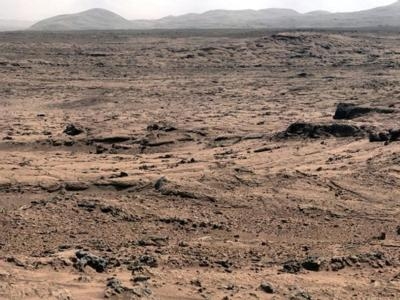
On Dec. 4, NASA announced plans for a robust multi-year Mars program, including a new robotic science rover based on the Curiosity design set to launch in 2020. The planned portfolio includes the Curiosity and Opportunity rovers; two NASA spacecraft and contributions to one European spacecraft currently orbiting Mars; the 2013 launch of the Mars Atmosphere and Volatile EvolutioN (MAVEN) orbiter to study the Martian upper atmosphere; the Interior Exploration using Seismic Investigations, Geodesy and Heat Transport (InSight) mission, which will take the first look into the deep interior of Mars; and participation in ESA's 2016 and 2018 ExoMars missions, including providing "Electra" telecommunication radios to ESA's 2016 mission and a critical element of the premier astrobiology instrument on the 2018 ExoMars rover. With InSight, there will be a total of seven NASA missions operating or being planned to study and explore our Earth-like neighbor.
The 2020 mission will constitute another step toward being responsive to high-priority science goals and the president's challenge of sending humans to Mars orbit in the 2030s.
On the commercial space side of the ledger, a Space Exploration Technologies Corp. (SpaceX) Dragon spacecraft successfully resupplied the International Space Station and returned cargo back to Earth in October, completing NASA's first contracted cargo delivery flight.
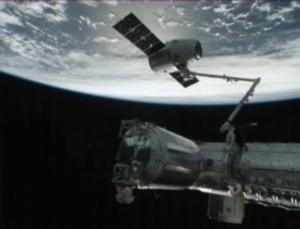
Under NASA's Commercial Resupply Services contract, SpaceX will fly at least 12 cargo missions to the space station through 2016. The Dragon launched on a SpaceX Falcon 9 rocket carrying 882 pounds of cargo, including crew supplies, scientific research and hardware. Dragon returned almost twice that amount of cargo, including a freezer packed with research samples collected in the orbiting laboratory's unique microgravity environment. These samples will help advance multiple scientific disciplines on Earth and provide critical data on the effects of long-duration spaceflight on the human body. The ability to return frozen samples is a first for this flight and will be tremendously beneficial to the station's research community. Not since the space shuttle have NASA and its international partners been able to return considerable amounts of research and samples for analysis.
SpaceX is one of two companies that built and tested new cargo spacecraft under NASA's Commercial Orbital Transportation Services (COTS) program. SpaceX completed its final demonstration test flight in May, becoming the first commercial company ever to launch, rendezvous and be docked to the International Space Station. Orbital Sciences is the other company participating in COTS. Orbital's Antares launch vehicle is on the launch pad at Wallops Flight Facility in Virginia in advance of a hot fire test of the Antares first-stage engines. A flight test of the Antares with a simulated Cygnus spacecraft and a demonstration flight of Cygnus to the space station are planned for 2013.
With commercial cargo flights to the space station under way in 2012, NASA took the next steps in the effort to launch Americans from U.S. soil again. The agency announced in August new agreements with three American commercial companies to design and develop the next generation of U.S. human spaceflight capabilities, enabling a launch of astronauts from the United States in the next five years.
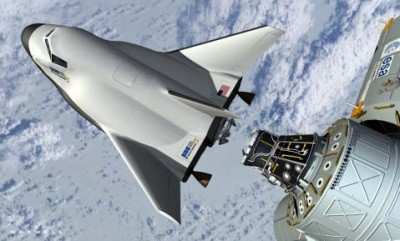
Advances made by these companies under Space Act Agreements through the agency's Commercial Crew Integrated Capability (CCiCap) initiative are intended to ultimately lead to the availability of commercial human spaceflight services for government and commercial customers. The CCiCap partners are the Sierra Nevada Corporation, Space Exploration Technologies (SpaceX), and The Boeing Company.
CCiCap is an initiative of NASA's Commercial Crew Program (CCP) and an administration priority. The objective of the CCP is to facilitate the development of a U.S. commercial crew space transportation capability with the goal of achieving safe, reliable and cost-effective access to and from the International Space Station and low-Earth orbit. Between now and May 31, 2014, NASA's partners will perform tests and mature integrated designs. This would then set the stage for a future activity that will launch crewed orbital demonstration missions to low-Earth orbit by the middle of the decade.
NASA and its international partners celebrated 12 years of permanent human habitation on the International Space Station on Nov. 2. More than 1,500 research and technology development experiments have been conducted aboard the orbiting lab -- more than 200 of them this year alone -- many of which are producing advances in medicine, environmental systems and our understanding of the universe.
Several new facilities delivered to the space station this year allow for an array of new research projects. The Japanese Experiment Module Small Satellite Orbital Deployer changes the way mini satellites now can be deployed to their optimal orbit, allowing for greater flexibility, operational control and significant monetary savings. The Aquatic Habitat received its first inhabitants, translucent Medaka fish, allowing for easy observation of their skeletal systems, which gives more insight into bone and muscle atrophy, which are medical issues for astronauts and the aging population, and radiation effects. A Gravitational Biology Lab also was delivered to station. The centrifuge allows for biological experimentation in artificial gravity -- from zero gravity to twice Earth's normal gravity -- for prolonged periods of time. This facility provides environmental control, lighting, data transfer, commanding and observation of experiments in Mars and moon gravity conditions, as well as mimicking Earth's
gravity. The centrifuge is useful for biological organism research and could lead to advances in medications and vaccines, agricultural controls and discoveries in genetics -- all beneficial to people on Earth.
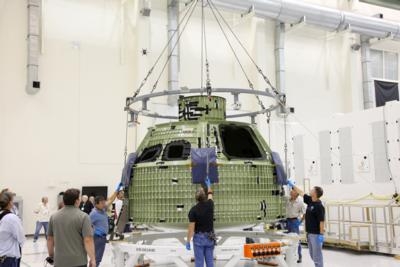
In July, NASA's Kennedy Space Center in Florida welcomed the arrival of the agency's first space-bound Orion capsule, marking a major milestone in the construction of the spacecraft that will carry astronauts farther into space than ever before. Orion will be the most advanced spacecraft ever designed, sustaining astronauts during space travel, providing safe re-entry from deep space and emergency abort capability.
The Orion at Kennedy will launch on Exploration Flight Test-1, an uncrewed mission planned for 2014. The spacecraft will travel 3,600 miles above the Earth's surface, 15 times farther than the International Space Station's orbital position. The primary flight objective is to understand Orion's heat shield performance at speeds generated during a return from deep space.
NASA and its industry partners around the country also made swift progress on the Space Launch System (SLS) this year, testing and developing new components and improving on existing hardware. New construction on the largest rocket ever built is enabled by existing, proven technology, like the space shuttle main engines that will power the first stage of the rocket. The new J-2X engine, which is targeted to power the upper stage of the rocket, underwent a battery of tests that broke duration records and pushed the engine design to its limits.
The Orion, SLS, and Ground Systems Development and Operations programs also reached their critical milestones this year each with an approved system requirement review and system definition review. Those pivotal steps allowed these programs to move from concept into its preliminary design phase and all remain on target for its first flight test in 2017.
Other significant stories included NASA's Hubble Space Telescope, which has allowed scientists to see further back in time than ever before, and uncover a previously unseen population of seven primitive galaxies that formed more than 13 billion years ago, when the universe was less than 3 percent of its present age. The deepest images to date from Hubble yield the first statistically robust sample of galaxies that tells how abundant they were close to the era when galaxies first formed.
NASA is continuing to learn more about how sound waves created by supersonic aircraft move through the atmosphere, all with an eye towards designing aircraft that generate sonic booms you can barely hear -- or can't hear at all -- on the ground below. This work could open a whole new segment of the economy for commercial aviation by making supersonic flight over land acceptable.
But against the backdrop of progress, NASA's shuttles, which some say potentially had a lot of flight time left, were delivered in 2012 to their new homes, where they will begin a new chapter in their careers: inspiring museum-goers of all ages to reach for the stars. Discovery arrived at the Smithsonian Institution's National Air and Space Museum in Dulles, Virginia, in April; Enterprise was unveiled at the Intrepid Sea, Air and Space Museum in New York in July; Endeavour was moved to the California Science Center in Los Angeles in October; and Atlantis was relocated to the Kennedy Space Center Visitor Complex in Florida in November.
You'll see more of the year's top stories in aerospace and all facets of aviation when ANN looks at it's top stories of the year in January.
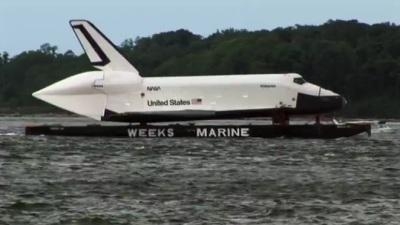
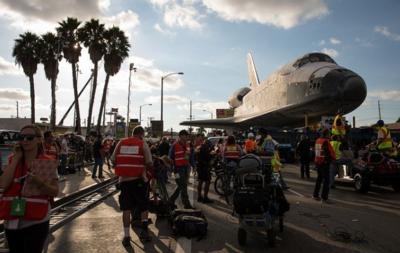
 ANN's Daily Aero-Linx (04.13.24)
ANN's Daily Aero-Linx (04.13.24) ANN's Daily Aero-Term (04.13.24): Beyond Visual Line Of Sight (BVLOS)
ANN's Daily Aero-Term (04.13.24): Beyond Visual Line Of Sight (BVLOS) Airborne 04.09.24: SnF24!, Piper-DeltaHawk!, Fisher Update, Junkers
Airborne 04.09.24: SnF24!, Piper-DeltaHawk!, Fisher Update, Junkers Aero-News: Quote of the Day (04.14.24)
Aero-News: Quote of the Day (04.14.24) ANN's Daily Aero-Term (04.14.24): Maximum Authorized Altitude
ANN's Daily Aero-Term (04.14.24): Maximum Authorized Altitude









